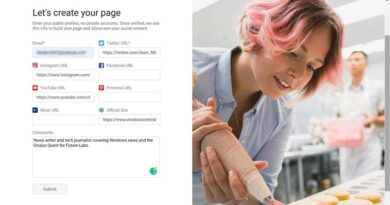Here’s Why Edge Computing Will Perfectly Size Its Role in 2023
With edge computing, it has always been possible to leverage “big data” (a term we now hardly ever hear) more effectively for AI, new kinds of applications, and improved efficiencies. Except in certain, well-known use cases, edge computing hasn’t gained much popularity, though. The benefits of edge computing have been appropriately scaled in terms of importance as network speeds have improved and cloud and SaaS infrastructure has become more reliable, pervasive, and secure.
Moving the compute source closer to the data is how edge computing operates. With technologies like IoT, it makes sense to do this, and we can all appreciate iPhones and wearable IoT gadgets like watches that can process data in real-time and without an internet connection. Response speed, cost savings, data aggregation and consolidation, privacy, and a decreased risk of security breaches are the main advantages of edge computing. Data sovereignty is a major issue in many places because firms are prohibited by law or policy from allowing data to leave specific domains. The geographic distribution of their data centres has allowed public cloud companies to address this issue, despite the importance of it. Although it is not a universal driver, it is nonetheless crucial for various forms of edge computing.
Understanding complexity and edge cost
The benefits of processing data near to its source are clear, and the idea of edge computing is a good one, but the complexity and maintenance costs associated with this approach are actually higher. The management, upkeep, and security of edge computing platforms are just like those of any other component of an organization’s infrastructure. Edge computing adds to the strain that organisations currently bear due to the size of their networks, IoT devices, and network users. By adding an additional “node” to the network, edge computing creates new attack surfaces for threats like ransomware and data breaches. This requires updating.
Technology Advances Will Continue to Impair the Idea of Edge Computing
Simply put, edge computing might make life harder for everyone rather than easier. Edge computing can complicate data governance and compliance in addition to the security and manageability issues. Platforms for edge computing may locally store personal information (PI) data that is subject to privacy regulations like the GDPR or CCPA. As part of data lineage considerations in a broader governance plan, edge computing may also execute significant data changes that must be controlled and governed.
These issues are not designed to be edge computing deal breakers, but rather to highlight the responsibilities that businesses using edge computing have. The ever-growing volume of data resulting from our ability and desire to measure everything, the need to produce actionable results from the data, the difficulties and complexities of managing edge compute infrastructure, and the quality and accessibility of alternative compute approaches all interact to create a dance of competing forces. We are using edge computing in certain important use cases, but we also understand that it is not as accessible, affordable, or widely used as we had originally anticipated.
What Would Remain If Not Edge Computing?
To be honest, the term “edge computing” is a little dated. Businesses today don’t truly consider “compute” to be the means to plan for growth in 2023. Instead, firms are planning for their future results and putting DATA at the forefront of their thinking. Organizations are constructing data fabrics or meshes as the central nervous systems that will control how businesses operate.
By directly connecting users, including data owners, producers, and consumers, data meshes increase users’ access to and availability of data. Additionally, they improve businesses’ ability to make decisions by allowing teams to generate data while producing useful data products for other teams. In contrast to edge computing, which solves problems like data bottlenecks locally, a mesh solves problems like these across the entire organization. It can safely and securely link cloud apps to sensitive data that is stored on a customer’s premises. Developers can query data from a range of storage devices without encountering access issues thanks to its ability to construct virtual data catalogues from sources that cannot be consolidated.
The technology adheres to four key principles: domain-oriented decentralized data ownership; data as a product; self-serve data infrastructure as a platform; and federated data governance. These four principles offer many of the business benefits of edge computing that were promised but never materialized. A data mesh, most crucially, places data where it belongs: at the core of every plan supporting the expansion and modernization of company.
It is crucial to shift the emphasis from computation to data, which also properly scales the consideration of edge or cloud computing. Data is the main focus of today’s organizations, and computation serves as a tool for extracting value from the data. We’ve long accepted that we’ll live in a “hybrid” society where things are both/and rather than either/or. However, modern business is now appropriately centered on its data, and in 2023 and beyond, we need to focus on enabling firms to exploit their data.




